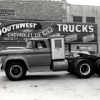-
Posts
663 -
Joined
-
Last visited

Phase 1 replied to vision386's topic in Antique and Classic Mack Trucks General Discussion

Phase 1 replied to umodelnut's topic in Antique and Classic Mack Trucks General Discussion

Phase 1 replied to Superdog's topic in Antique and Classic Mack Trucks General Discussion

Phase 1 replied to jaysm35a2's topic in Antique and Classic Mack Trucks General Discussion

Phase 1 replied to dover's topic in Antique and Classic Mack Trucks General Discussion

Phase 1 replied to 41chevy's topic in Antique and Classic Mack Trucks General Discussion

Phase 1 replied to tkobes43's topic in Antique and Classic Mack Trucks General Discussion

Phase 1 replied to shortstack's topic in Antique and Classic Mack Trucks General Discussion

Phase 1 replied to 41chevy's topic in Antique and Classic Mack Trucks General Discussion

Phase 1 replied to stev's topic in Antique and Classic Mack Trucks General Discussion

Phase 1 replied to rhasler's topic in Antique and Classic Mack Trucks General Discussion

Phase 1 replied to farmer52's topic in Antique and Classic Mack Trucks General Discussion

Phase 1 replied to alawode's topic in Antique and Classic Mack Trucks General Discussion

Phase 1 replied to jaysm35a2's topic in Antique and Classic Mack Trucks General Discussion
BigMackTrucks.com is a support forum for antique, classic and modern Mack Trucks! The forum is owned and maintained by Watt's Truck Center, Inc. an independent, full service Mack dealer. The forums are not affiliated with Mack Trucks, Inc.
Thank you for your support!